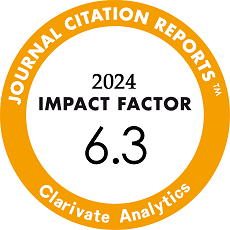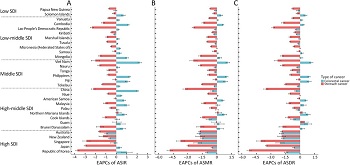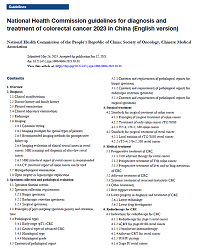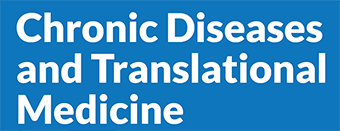
2024 Impact Factor of CJCR: 6.3
Journal Citation Reports ™, Clarivate Analytics

Temporal trends, disease burden and attributable risk factors of stomach and colorectal cancers among 31 countries and territories in Western Pacific region, 2000−2021
Stomach cancer (SC) and colorectal cancer (CRC) present significant public health challenges because of their high incidence and mortality. According to the International Agency for Research on Cancer (IARC), more than 968,000 new cases and nearly 660,000 deaths of SC occurred in 2022, ranking the cancer as fifth in terms of both incidence and mortality worldwide. Among the six WHO regions, the Western Pacific region (WPR) suffered from the heaviest burdens of SC and CRC.

Global, regional, and national burden of colorectal cancer, 1990−2021: An analysis from global burden of disease study 2021
Data on the global, regional and national changes in the trends of colorectal cancer (CRC) are analyzed to understand the trends in its burden, in order to assist policymakers in allocating healthcare resources and developing prevention and control strategies. Referring to the latest data from the GBD 2021, this study quantifies the impact of different factors on the global, regional, and national burden of disease associated with CRC, and focuses on the differences in the burden of CRC across different SDI regions as well as across different age groups. This study was conducted to rationally allocate medical resources and optimize preventive strategies based on the analysis of the results.

Artificial intelligence efficiently predicts gastric lesions, Helicobacter pylori infection and lymph node metastasis upon endoscopic images
Artificial intelligence has been widely applied in analysis of medical images, including computed tomography images, endoscopic images, histological images, and organoids images. In the current research, the performance of 14 convolutional neural network models was explored for classification and prediction of endoscopic images from human stomach. The purpose is to improve diagnostic accuracy and working efficiency. By training and comparison, EfficientNetB7 revealed the best performance on two-category of gastric cancer and benign lesions, gastric ulcer and ulcerated cancer, as well as early gastric cancer and non-gastric cancer. The EfficientNetB7 was also suitable for predicting the infection of Helicobacter pylori (Hp) and non-Hp infection (noHp). Notable, the InceptionV3 model was capable of predicting perigastric lymph nodes metastasis from endoscopic images.

IMpower210: A phase III study of second-line atezolizumab vs. docetaxel in East Asian patients with non-small cell lung cancer
Non-small cell lung cancer (NSCLC) accounts for more than 80% of all lung cancers, with most patients presenting with advanced or metastatic disease. Lung cancer incidence is particularly high among Asians, who constitute approximately 50% of the global cases. This study reports the results from the phase III IMpower210 study, which compared the efficacy and safety of atezolizumab monotherapy with those of docetaxel in East Asian patients with advanced or metastatic NSCLC who had experienced disease progression with platinum-based chemotherapy. IMpower210 did not meet its primary efficacy endpoint of OS in the ITT EGFR-WT or overall ITT populations. Atezolizumab was comparatively more tolerable than docetaxel, with a lower incidence of grade 3/4 TRAEs.

Plant-based dietary patterns and risk of esophageal cancer: A prospective cohort study spanning 17 years
Plant-based diets have multiple health benefits for cancers; however, little is known about the association between plant-based dietary patterns and esophageal cancer (EC). This study presents an investigation of the prospective associations among three predefined indices of plant-based dietary patterns and the risk of EC. It performed endoscopic screening for 15,709 participants aged 40−69 years from two high-risk areas of China from January 2005 to December 2009 and followed the cohort until December 31, 2022. This study proves that a healthy plant-based dietary pattern was associated with a reduced risk of EC. Emphasizing the healthiness and quality of plant-based diets may be important for preventing the development of EC.

National Health Commission guidelines for diagnosis and treatment of colorectal cancer 2023 in China (English version)
National Health Commission of the People’s Republic of China; Society of Oncology, Chinese Medical Association







